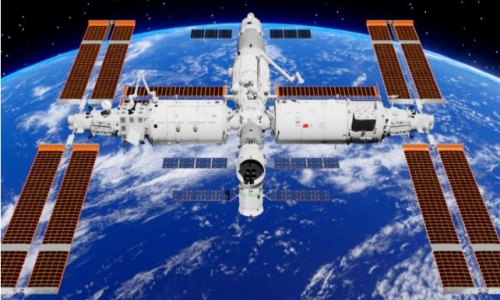


 12:30:33
12:30:33  2025-02-01
2025-02-01  870
870

Parents sometimes see connecting with their children as a duty. After all, we have a long list of commitments, and what we really want is an hour to ourselves without anyone clinging to us. But the truth is that this rewarding connection is our reward for all the hard work we put in. The moments that melt our hearts are what make all our very real sacrifices worth it. Our children need to know that they are a source of joy to us, or they won’t see themselves as worthy of love. In fact, your ability to enjoy your child is the most important factor in their development. It’s what drives you—innately—to do all the things that help them blossom, from cooing at baby to playing rough with them at three and chatting with them at five. That deep connection is also what makes reassuring parenting possible. Children cooperate willingly, even enthusiastically, when they know we are there for them. When that certainty doesn’t run deep in their psyche, our behavioral norms seem unfair and in conflict with what they perceive to be their own best interests, whether that interest is getting the biggest piece of the pie or lying to us.
No amount of “parenting skills” can make up for the erosion of the parent-child bond. It’s like riding a bike up a steep hill. Parenting with a strong relationship, on the other hand, is like going down a steep slope—you still have to pay attention and stay on the road, there will be twists and turns, but the momentum is on your side.
A close bond allows us to tap into our innate parenting knowledge, and it allows us to see things from our child’s perspective, which makes us better parents. It also makes children more open to our power of influence, even after they’ve gone out into the wider world of friends, school, and the rest of their lives. Study after study shows that the best way to protect teens from the extremes of culture and peers is to have a close relationship with their parents. And you build that connection from infancy onward. Let’s take a look at how communication plays out during infancy.
Communication in Your Baby’s Development
Infancy (0–13 Months): Programming the Brain
What’s as important as food for your baby’s best development? Communication. Humans are born ready to give and receive love. All of our emotional development—including our ability to regulate our emotions, control our moods, delay gratification, and form healthy romantic relationships—is built on the nurturing we received as babies. In fact, our brains are formed in direct response to our interactions with our parents.
Newborn brains come into the world with a lot of development ahead of them. Humans retain the flexibility to adapt to different environmental conditions. So your interactions with your baby during his or her first year will largely determine how his or her brain and nervous system will function for the rest of his or her life. Your baby learns to regulate himself or herself physiologically, and thus psychologically, through his or her connection to you. Your gentle touch regulates his or her stress and growth hormones. His or her heartbeat synchronizes with yours. As Sue Gerhardt says in her book Why Love Matters: How Love Works the Baby Brain , babies “establish their own natural arousal range,” so they “coordinate their system with the system around them. Babies born to depressed mothers adapt to low stimulation and become accustomed to a lack of positive emotions.
Babies born to agitated mothers may remain overstimulated and
feel like they’re about to explode.”
Here’s how natural sparring works when parents spontaneously engage with babies. Your baby looks at you, you smile and coo. She smiles back, kicks her feet excitedly. You coo and smile even more excitedly to match her excitement, and you both feel increasingly loved and happy. After a while, your baby needs to calm down, returning to a lower level of arousal and looking away. Some parents may continue to nudge her to elicit more smiles, but you’re still committed to the rhythm. You realize your child needs a break, so you speak in a low voice. She glances back at you: Is it safe to engage? Yes, it is. You smile softly as you lower your energy. She curls up, content. You’ve caught her signal. She knows she can express her needs, and you’ll respond with help. What a delicious, safe world—a world of both excitement and stillness. With your help, she can handle whatever comes her way. What happened? Your little one has just learned an important lesson in self-regulation from her interactions with you. She can feel happy, excited, even overly excited. When she feels overwhelmed and overwhelmed, she can send out a distress call. You help her calm herself down. Life is safe. Or, more accurately, you keep her safe. You help her regulate her emotional states, whether they’re good or bad. Her attachment to you keeps her safe. She can trust the universe. During your baby’s first year of life, this interaction will happen many times.
Your baby is learning a lesson about trust, one that is physiologically etched into his brain. During this interaction and all that follow, says neuroscientist Alan Schore, “the mother loads emotional programs into the right hemisphere of the baby’s brain. The baby uses the output of the mother’s right brain as a template to imprint and run circuits in his right brain.” You even determine the size of his hippocampus (the more developed it is, the better his ability to learn, manage stress, and mental health), the anterior cingulate cortex (responsible for emotional regulation), and the amygdala (responsible for emotional reactivity). This early brain programming affects happiness and mood levels later in life, because better programming means a better ability to relate to others, regulate positive and negative emotions, and soothe ourselves.
Prioritizing your connection with your baby makes it easier for you to care for him, making him content and growing up to be a safe child.
We are happy and cooperative. Soothing is essential for all infants, whose brains develop the ability to regulate negative emotions directly from the experience of being soothed. Most, but not all, infants insist on being held and held most of the time, which helps them regulate themselves physiologically. A newborn’s sleep patterns synchronize with their mother’s sleep patterns, so infants who sleep close to their mothers are better able to regulate their arousal levels and breathing, reducing the risk of sudden infant death syndrome (SIDS). Your connection with your infant also helps you understand her unique signals and needs, building your confidence as a parent. Once your infant knows that her caregivers will reliably care for and protect her, she draws on this inner security as she moves on to the next developmental tasks of exploring, mastering the environment, and forming relationships with others.
You may think of what is now called “attachment parenting” as a new trend, often attributed to Dr. Bill Sears. But there’s nothing new about this; we’ve been doing this kind of parenting since the beginning of time. Dr. Sears himself says, “Attachment parenting is not a new parenting style… In fact, it’s the way parents have been raising their children for centuries, until childcare consultants came along and urged parents to follow the books instead of the kids.”
The attachment parenting approach is now backed by a dizzying array of theories and academic research, but the basic idea is simple and obvious. Human babies are born helpless compared to other mammals, and they need parents to keep them close until they are able to survive on their own.
Unfortunately, a myth has developed in our society that attachment parenting requires parents to live by self-sacrificing rules. That’s not the case at all. You don’t have to constantly hold your baby or sleep with him to form a secure attachment. The only basic rule—and the logic, as we mentioned earlier—is that a healthy attachment requires you to be attuned to and responsive to your baby’s unique signals. And what mother wouldn’t want to do exactly that? So let’s redefine attachment parenting. It’s simply responding to your baby’s emotional and physical needs, which in infancy often involves staying physically close to the parent. As with all things parenting, our ability to do this depends on our emotional maturity. In fact, research on this topic shows that we can predict during pregnancy—before the baby is born!—whether a baby will be securely attached to his or her parents. How? By simply interviewing the parents. If we were securely attached to our parents, our baby will almost certainly be securely attached to us. Conversely, if we grew up with parents who didn’t reliably meet our needs, and we relied on or avoided our own desire for connection, we won’t feel comfortable connecting intimately with our baby. Fortunately, this relationship isn’t just a function of what happened to you, but how you deal with it. When you reflect on your childhood, unpack your emotions, and revise your life story from a caring adult perspective, you’re actually developing your brain’s orbitofrontal cortex—and in the process, you’re able to nurture your infant responsively and securely. In fact, the way we as parents reconcile our attachment past is a more reliable predictor of secure attachment than any other factor, including parenting practices like co-sleeping or even the amount of time we spend with our child. The good news is that as you make peace with your childhood story, you’re subtly changing your emotional availability to your child, and your child will blossom accordingly, whether she’s an infant or a nine-year-old.
Are you worried about whether your child had enough attunement as an infant? It’s clear that optimal structuring in the first three years, when your little one is building her brain, is better than patching it up later. But the latest research shows that the brain continues to grow and change throughout life. When you soothe your four- or six-year-old, his brain is still learning how to soothe itself. He may need more crying to recover from his experience of separation or fear, but his young age makes him open to that healing. Your patience with his emotional meltdowns is key to his overcoming any past hurt. But in this case, it becomes even more important to remember that his difficult behaviors are a red flag that he needs your emotional help. The understanding you give your child is always healing. No mother can be in sync with her baby all the time. As researcher Edward Tronick puts it: “The interaction is only ‘perfectly’ synchronous perhaps 20 or 30 percent of the time. Otherwise, the parent is either synchronous, out of synchrony, or returning to synchrony. These periods of out of synchrony free the parent from the constant burden of perfection—because you can’t be perfect. No matter how hard you try, you won’t be. But when you reconnect with your child, you sometimes—but not always—invent something new. You come up with a new way to do something with him that you haven’t done before. And when you invent something new, you grow. And that growth is so important to the infant.”
Toddler Stage (13-36 Months): Establishing Secure Attachment
Let’s see what happens to parent-child communication when our infant reaches the “terrifying age of two.” He is now a toddler who can regulate his own physiology, but he still relies heavily on you to help him regulate himself emotionally. His emotional controls, located in the prefrontal cortex, are still being built. Ironically, while it is the toddler's job to assert himself as an active explorer of his world, he can only begin to develop those wings if he is securely attached in his relationship with us.
Assessing Attachment
In the "Strange Situation" experience, a brief but stressful separation occurs, followed by a reunion in an unfamiliar situation.
Reality Of Islam |
|

If you'

Imagine bei

MIT en
 9:3:43
9:3:43
 2018-11-05
2018-11-05
10 benefits of Marriage in Islam
 7:5:22
7:5:22
 2019-04-08
2019-04-08
benefits of reciting surat yunus, hud &
 9:45:7
9:45:7
 2018-12-24
2018-12-24
advantages & disadvantages of divorce
 11:35:12
11:35:12
 2018-06-10
2018-06-10
 6:0:51
6:0:51
 2018-10-16
2018-10-16
 8:4:21
8:4:21
 2022-01-08
2022-01-08
 4:2:19
4:2:19
 2022-10-10
2022-10-10
 12:10:56
12:10:56
 2022-11-17
2022-11-17
 10:55:53
10:55:53
 2022-06-13
2022-06-13
 11:34:48
11:34:48
 2022-06-29
2022-06-29
 4:26:43
4:26:43
 2022-02-21
2022-02-21
 2:33:4
2:33:4
 2023-02-15
2023-02-15
 5:41:46
5:41:46
 2023-03-18
2023-03-18
| LATEST |